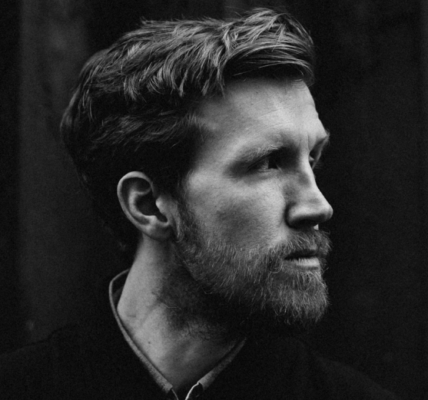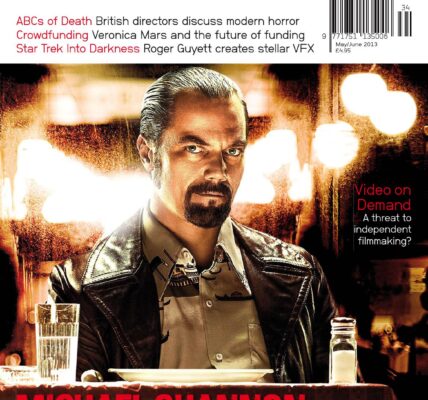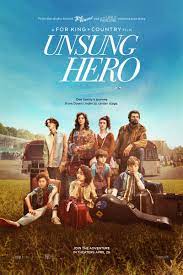Transmedia is a real buzzword at the moment. What is it, and why should we be excited?
I’m not necessarily a fan [of the term transmedia], because I feel like it’s transitional; by its very definition all media will be fluid, so you won’t need to label it as ‘transmedia’. But what’s exciting to me is that, all of a sudden, I can tell stories across multiple devices, multiple screens and into the real world. People think transmedia is just about seeing what a character is doing when they are not on screen. I’m a writer by trade, and I’ve made films for the last 17 years; from my perspective, it really is about that ability to expand and add a story and game layer to what, effectively, is the real world. I’m very interested in how stories can start to become more pervasive, and how they can place themselves in a more meaningful way within an audience’s life.
I’m looking at it, and saying, ‘OK, there’s all these really amazing new tools and ways to tell stories’, and then, on the other side, you have people who feel like, effectively, they are their own media company; they can push-button publish, they can upload videos, they can have a blog, they can do whatever they want. Whether an audience is listening or not, is a different story. But we’re moving into this realm of where authorship starts to shift. I think it’s a really interesting cultural moment and it’s going to lead to a renaissance in storytelling.
Can you give us an example of transmedia in action?
Recently I did the first transmedia project to unfold at Sundance [Film Festival], called Pandemic 1.0. Pandemic 1.0 is about a global outbreak of a sleep virus that only affects adults. There’s a feature film within that story world, called Hope is Missing. Pandemic is centred around when the outbreak first starts, and [Hope is Missing] comes in 90 days later in one isolated town. Right there you see a timeline manipulation.
I [also] took a game approach. Over five days at Sundance, people online and at the festival worked together to stop the spread of the pandemic. There was [sic] a variety of things hidden throughout Park City, like golden objects and bottles of water, and all of those things had bar codes and could be scanned. We built a Mission Control with data visualisation that showed the story unfold, and if you brought items back [to Mission Control] it would reduce the amount of people that were infected.
We had 20 actors working throughout Park City, whose actions were scripted through Twitter. We even had connected toys; I made a number of bears out of resin [and] in its stomach was a camera and in its eye was a viewfinder, so you could see an analogue slide when you went up to it. When someone leaned forward [to view the slide], I was trying to capture what was, effectively, a feeling of a memory. I have all this footage of people holding the bear and looking at it, and then realising that there is something inside the head and reacting to it.
It was very much about how can I mine the themes of the story, and keep bringing them back into the experience? I was mining themes of materialism, because there were these golden objects, and I was [also] looking at how things actually spread, socially. Can something be spread virally online? This is an example of how a story world can really be a rich extension, and can be told in a variety of ways.
Why do you choose to work within the realms of transmedia?
I am very driven by the idea of story research and development. I would argue that most work is underdeveloped; I came out of a film background, so I’m really referring to films at this point. But transmedia [also] falls into a mix where people are either really good on the games side, or the story or the tech side, but it’s difficult to get all three of those things together. What I think is wonderful about transmedia is yes, it can be used for promotion and marketing, yes, it can be used for audience building, yes, it can heighten certain levels of engagement. But it can also be used to flesh out a story. I’ve used it as a way to rehearse with actors, as a way to refine and filter things that I’ve put back into a script, I’ve used it as a way to R&D the stories that I wish to tell.
How do you see transmedia evolving?
I think it is being pushed very quickly, because of market conditions. Technology is really advancing, through tablet devices, mobile devices and broadband connectivity, and the entertainment industry is going through a major transition. Any time you have an influx of new technology and new audience consumption behaviour, you see rapid change.
So audiences are having a direct impact on how storytelling is involving?
People are wanting more out of their stories than they ever have before. The information explosion has made it so that you can pretty much find out any information you want. Whether it is accurate enough is a different story, but you can dig as deep as you want on a topic. Now, if people really respond to something they want to know more about it; they want it to be a richer experience.
That’s not to say that cinema won’t continue to be what cinema is. It’s just saying that, for a new generation of watchers or viewers or players, the paradigm is shifting. A lot of the time, the market cycle to make films is, I would argue, rushed, or it’s by committee, so a lot of that work is not as developed as it could be. On the other side, you have a whole new generation of consumers who are looking for far more within that work. When I design, I’m always trying to give each part of what I do a beginning, a middle and an end. So it’s not about cliffhangers that force you to go to a website, that force you to tune in at a certain time to reach a conclusion. I’m trying to build emotional connections across these devices. For me, a lot of it is about how I can bridge that story in a fragmented media world.
So you don’t think many filmmakers use transmedia to its full potential, or even understand its possibilities?
If I were to make an analogy of where it currently stands, transmedia is very much at the phase where, in the silent era, they would shoot stage plays. And we are at the moment where someone realised, ‘Oh wait, we don’t have to point the camera at the stage any more, we can take the camera outside’. So we’re at the very early stages of learning [this new film] language.
Transmedia is at a crossroads, where it needs storytellers to step up and experiment with how to tell those stories. I feel like the audience is ahead of the industry; their consumption habits are already telling their own stories. It’s up to the storytellers to catch up to where they are, and understand how to involve them in a more meaningful way. And on the business side, physical media isn’t paying the same, foreign sales aren’t the same as they were before, and we’re dealing with market conditions that are very challenging. People want more control over what they want and how they want it, and you either give it to them or not. And if you don’t, they are going to find it themselves.
Is transmedia the domain of the young filmmaker, or something that can be embraced by all generations?
Look at how Facebook has revolutionised social [media]; people are telling stories across that, they are connecting across that, they are sharing across that. And the demographic for Facebook is not just a new generation of digital natives, it’s people of all different ages. So I think that this is relevant, and something can be learned by filmmakers of all ages. And you’re seeing it; Guillermo del Toro, for example, just recently started a transmedia studio. Brian Grazer has a first-look deal with Blacklight Transmedia. Tom Hanks is dipping his toe into it with Playtone [and] Tim Kring, the creator of Heroes, is doing a lot with it.
Inevitably, any time that somebody hears what [transmedia] is, a lot of filmmakers just throw up their hands and say, ‘I have enough to do with telling this story and making it good, and I don’t have the time for all these other peripheral things’. And they see them as distractions, when I see them as strengths. I see them as a way to hone the craft and make the work stronger. I think you will start to see new practitioners come in, who will help to service a variety of needs that the market bears.
Is transmedia storytelling more successful at grass-roots level, or coming from big studios, who have the money to spend?
I think it can work very well at all different levels. I think the inspiration usually bubbles up [from independent filmmakers]; that’s a combination of having to be more resourceful and working against limitations. In some cases, that breeds some really interesting creative exploration. But, especially in the United States, huge conglomerates own the industry. And any time a conglomerate can better cross-collateralise or make better use of assets, they are going to. I think you’re going to see it naturally happen on the bottom, and innovate itself, and you’re going to see it [come from the] top down as they try to figure out where these new potential revenue streams will be.
Is the transmedia element something that should always be considered at the genesis of a project, or can a finished film be developed to incorporate these cross-media themes?
I think it’s always strongest if you can start that way, when you’re not shoehorning it in. That’s not to say that elements couldn’t be expanded after the work is produced. I think it really comes down to the creative team’s ability to create in and around that world that they have built.
I love that it feels like a new frontier; it hasn’t been claimed yet. People don’t say, ‘This is exactly how it has to work’. That’s incredibly liberating as a storyteller. It’s basically saying that I can take all the things I love about storytelling and I can start to look at technology creatively, as a set of tools to help me better connect with the audience, the players, the collaborators that I have for the work. Elements of the story worlds I create resonate with how audio traditions of storytelling evolved, where it wasn’t uncommon for somebody to sit around a campfire and share a rendition of a story and add their nuances to it.
Where we have been with entertainment [to this point] is very much [from the] top down. It’s like, ‘We produce the work, you come and look at it, and then if you want to talk about it over coffee, or go on a message board, that’s great’, but it’s at an arm’s distance. I think we’re running smack into a whole new generation of people who are saying, ‘Wait a second. We want to take this and do all kinds of things with it’. The challenge is [to create what] I call a ‘bullet hole in glass’. I usually design with a singular vision for my story, then I want it to crack out so the audience can be in those cracks. I want it to almost break, so then I can see what worked and what didn’t work, and then I can revise it.
People who are building story worlds need to be theorising less and experimenting more. Whether it leads to failure or not, that’s what’s going to inform how these stories are told in the 21st century. •
Lance has been named by both BusinessWeek and WIRED magazines as one of the people changing the face of modern Hollywood. Find out more about his transmedia projects at www.lanceweiler.com











